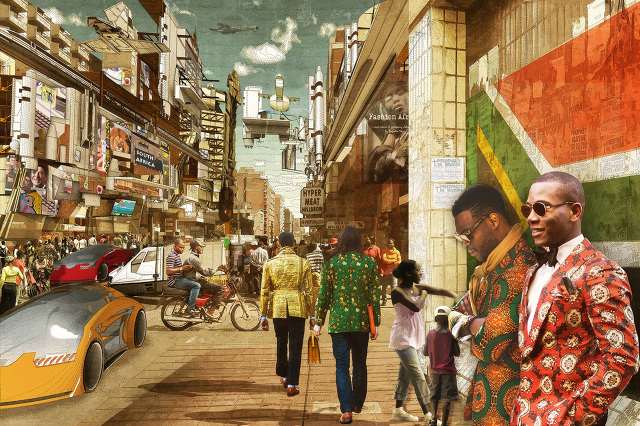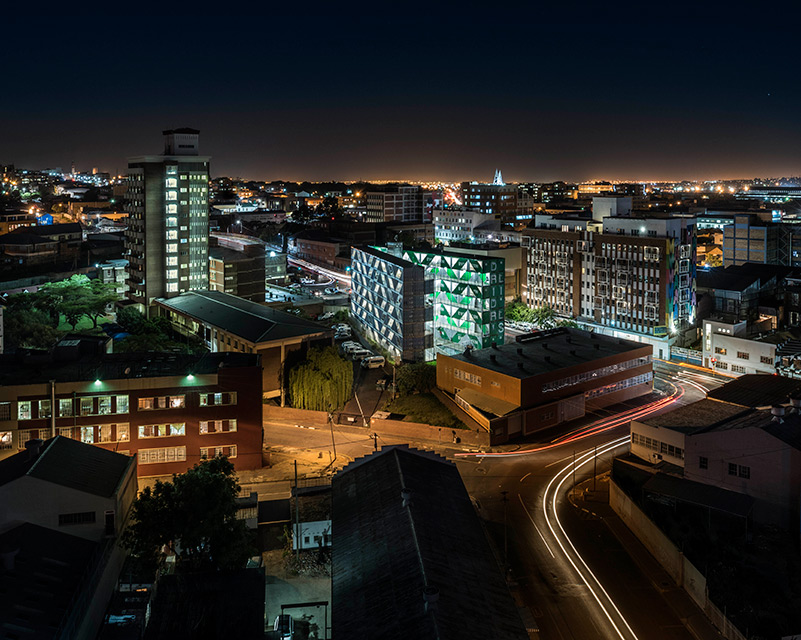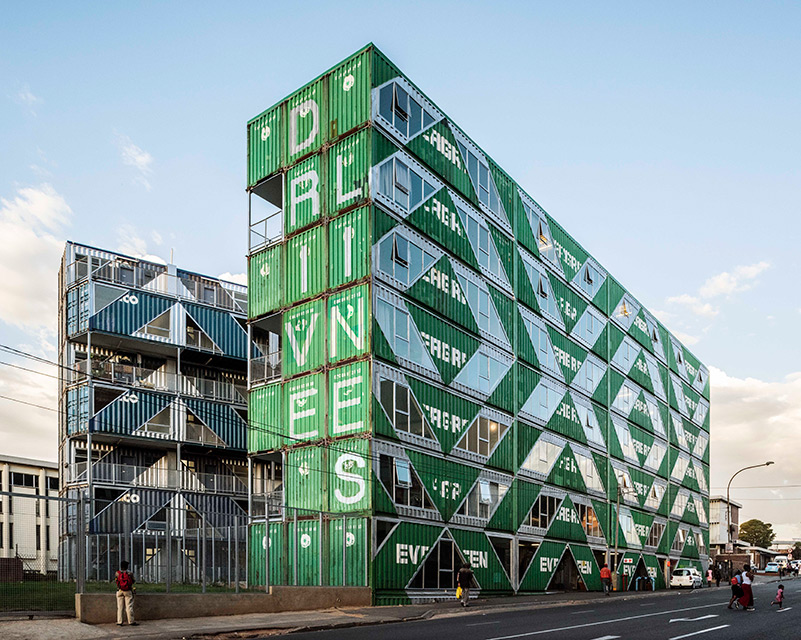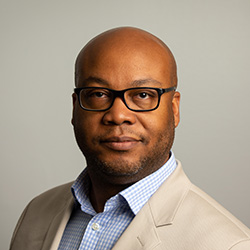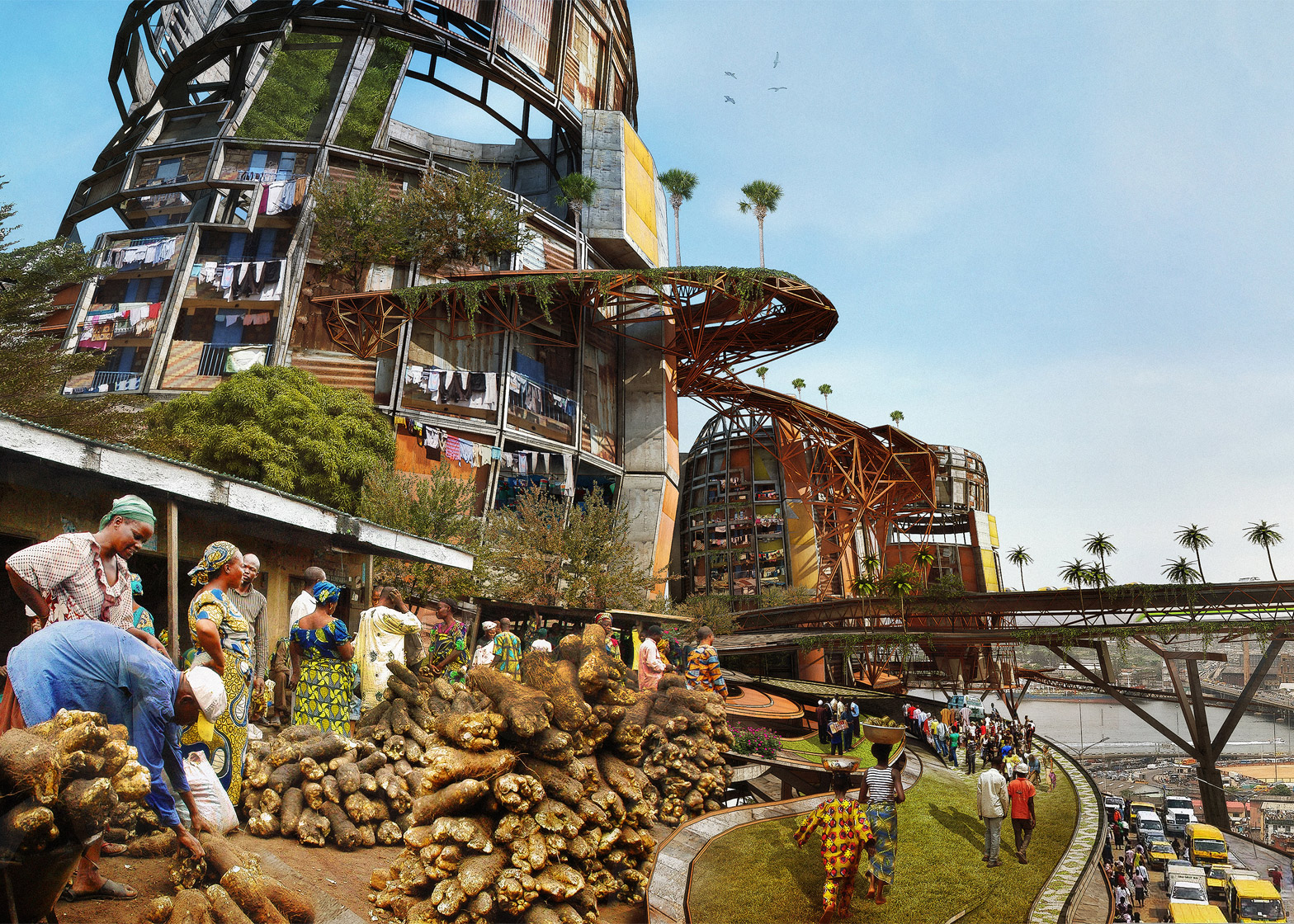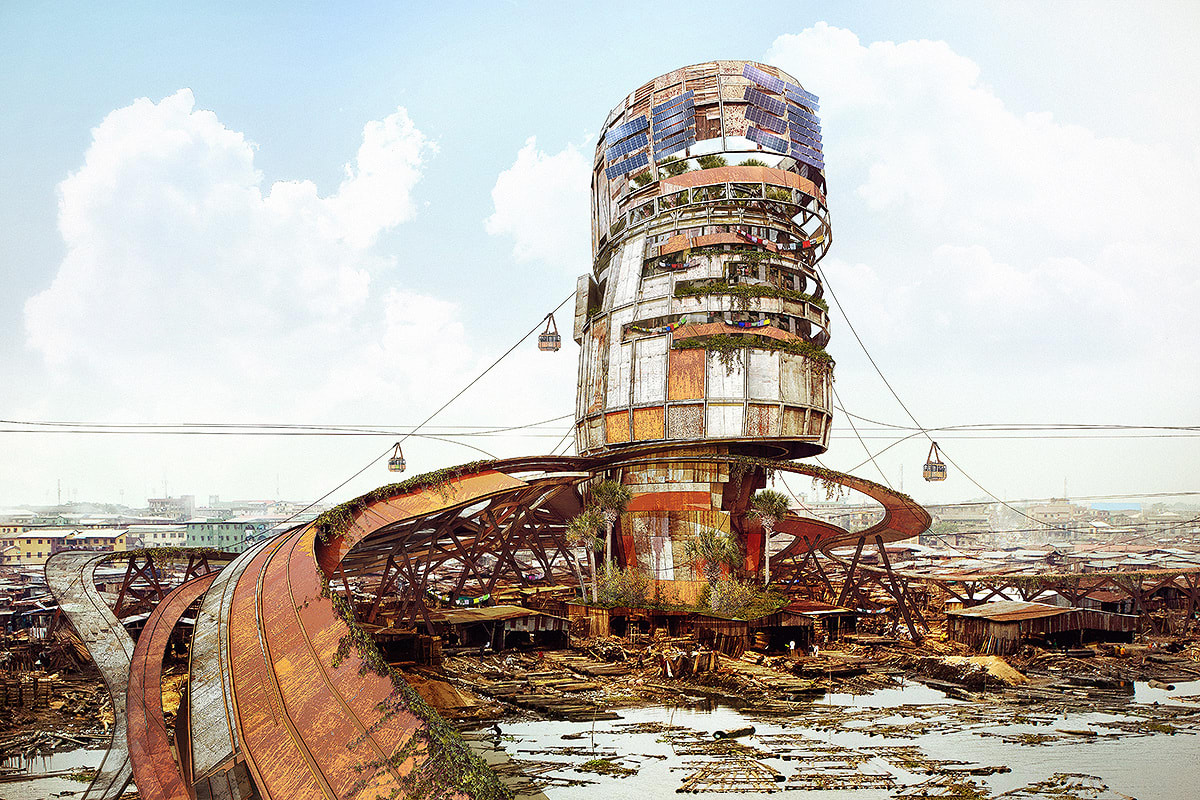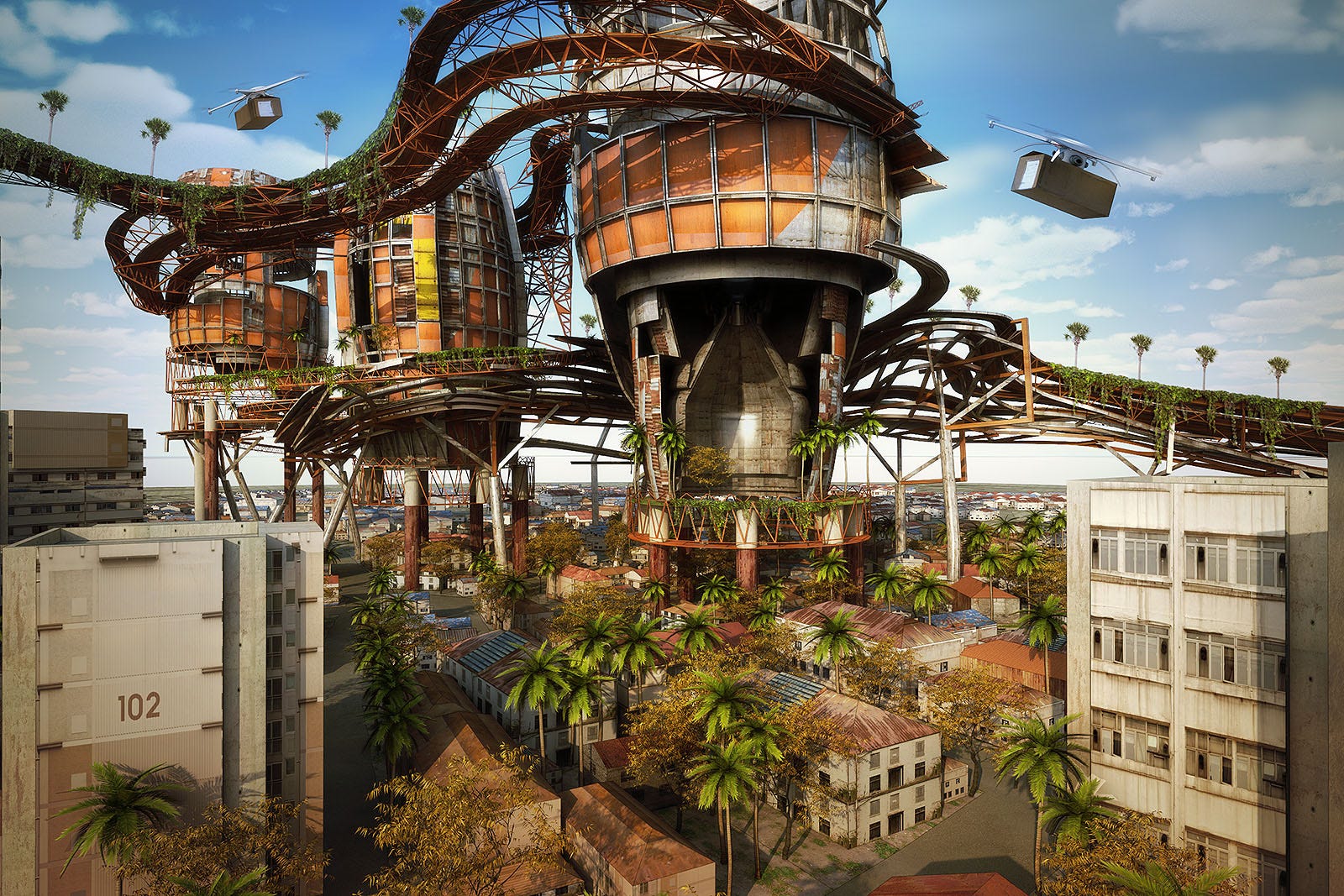| Author | Message |
Afrofuturism: in reality and fantasy
I believe the more people can see areas developed in a futurist way, seen in sci-fi films, art, Speculative Fiction, architecture, the more create and financial developement and commerce can take place. We need more from Indigenous.Native (N & S Americans) and Aboriginal Austalians, India even
"Why limit, criticize or mute expression? Architecture has its own language, not unlike other professions, pursuits, and genres. Does everything have to be diminished and diluted to lowest common denominator?"
| |
- E-mail - orgNote -  Report post to moderator Report post to moderator |
A New Generation Of African Artists Have A Bold Vision For The Future "Making Africa" at the Guggenheim Bilbao has old-meets-new portraits, startling videos and futuristic glasses.
Works from African illustrators, designers, artists and photographers are being shown at the exhibition titled "Making Africa" at the Vitra Design Museum, Germany. The exhibition wants to give an insight into contemporary Africa as well as share how the artists envision their Continent in the future. Over 120 artists and designers are being exhibited. I wish I would be in Germany right now – this exhibition just sounds and looks amazing. Great idea and approach to also give the general public an insight into what contemporary Africa is all about. "The exhibition focuses on a new generation of entrepreneurs, thinkers and designers from and within Africa, who – as digital natives – address a global audience and provide the world with a new vantage point on their continent." Omar Victor Diop, Mario Macilau and Olalekan Jeyifous... to name just a few of the artists that are being showcased. The bridge to fashion: Olalekan Jeyifous created the art work titled "Africa 2081 A.D." for NYC-based Nigerian designer Ikire Jones. Pretty cool how he envisions African cities in the future and how he integrated some of the images/designs from Ikire Jones. Let me know your thoughts – comment below!
| |
- E-mail - orgNote -  Report post to moderator Report post to moderator |
Multi-Storey Residential Building in Johannesburg Made from Shipping Containers by LOT-EK
Drivelines Studios is a residential building in Johannesburg, South Africa. Located in Maboneng, an area of recent urban transformation and renewal, it responds to the post-apartheid generation's desire to repopulate the city's downtown through new models of urban living. Embracing the triangular geometry of the site, the building is conceived as a billboard where two separate volumes of residential units are hinged at the narrow east end of the lot, framing the social space of the open interior courtyard. As in a billboard, the building outer facades are straight and flush with the lot line while the facades in the inner courtyard are articulated by the staircases, the elevator tower and the bridges connecting all levels, and by the open circulation paths activated by the units spillover onto their outdoor space. The building is modular and made of 140 upcycled shipping containers. Containers have been selected by colors to be left unpainted, with availability dictating the ultimate building color. They were stacked and cut on site and combined to form the units. A large diagonal cut-out, from the corner to the center of each container long side, generates the large windows for the units on street and courtyard sides. Its repetition and mirroring generate the building façade pattern.
The ground level is occupied by residential at the rear, retail along the Albertina Sisulu Road, and the private courtyard for the residents with planted areas and a pool. The six levels above are occupied by the residential units, all open plan studios varying in size between 300 sqft (28 sqm) and 600sqft (56 sqm). All units include an outdoor space along the courtyard facing walkways. The building's social intention and agenda are in line with the emerging urban community of its surrounding neighborhood, taking an active role in the revitalization, reactivation, and reimagining of the city downtown.
https://visuall.net/2019/...by-lot-ek/
| |
- E-mail - orgNote -  Report post to moderator Report post to moderator |
| |
- E-mail - orgNote -  Report post to moderator Report post to moderator |
Milton Davis: I don't see the word as exclusionary. While I don't think there is a clear definition, what it does guarantee to me is that whatever the story is, it will include people of African descent in it, which we all have to admit has been, and still is, seriously lacking. An Afrofuturism or Black Speculative Fiction story might contain all Black characters or it might contain main Black characters in a multi-cultural setting. This is a direct reflection of my life. There are times I'm in a multicultural situation, and there are times that I'm in an all black environment. Afrofuturism, Sword and Soul, Steamfunk, Urban Fantasy and Roccoa insure our inclusion as a whole in the genres they are associated with, even though the individual project might be exclusive.
| |
- E-mail - orgNote -  Report post to moderator Report post to moderator |
Afrofuturism:
Science-Is Fiction: Milton Davis thank you! I look forward to your thoughts on it. Good question. I think my novel comfortably fits under Black Sci-Fi, experimental fiction, slip stream, or Afrofuturistic. . I appreciate your thought about not wanting to see us dealing with these same issues in SciFi so far into the future. But I think I see the future as relative, which is why Afrofuturism appeals to me. It empowers me to think of the future as being now...or the next moment...or tomorrow. It empowers me to think of time differently, much in the way that I am told my ancestors in African communities experienced time, as cyclical and non-linear. It invokes for me the thought of Octavia Butler's time machine in Kindred, and how the concept of the future became relative to Dana when she had to ensure her bloodline. . Afrofuturism allows me to use Sci-Fi to explore things that I have experienced or people I work with experience everyday (incarceration, teen pregnancy, interactions with the foster care system), where these institutions and issues are present and accounted for in their foreseeable future. The people in my immediate social circle and community are not so much looking 1000 years into the future because they are really unable to conceptualize even making it to the next week. So, while I don't think Mark Dery had any of these concepts in mind when he coined the term, I think the term and how people apply it has evolved in a healthy way. And not everyone will identify with it or has to, and like with any community, there will be disagreement on language simultaneous to agreements and commonalities that allow us to recognize all of us Black Sci-Fi-entists / Spec Fictionists / Afrofuturists as having some common goals of self-expression and actively engaging our identities and the communities we come from. . But, at the same time, I agree with others and these are things that I actively renegotiate all the time as I participate in Afrofuturism. | |
- E-mail - orgNote -  Report post to moderator Report post to moderator |
| |
- E-mail - orgNote -  Report post to moderator Report post to moderator |
AWESOME THREAD
This is what you want...This is what you get. | |
- E-mail - orgNote -  Report post to moderator Report post to moderator |
[Edited 1/1/20 10:04am] | |
- E-mail - orgNote -  Report post to moderator Report post to moderator |
love this so i reposted it (kinda) this was on PRINCE.ORG OldFriends4Sal i am KING BAD!!!
you are NOT... STOP ME IF YOU HEARD THIS BEFORE... | |
- E-mail - orgNote -  Report post to moderator Report post to moderator |
https://upittpress.org/bo...822946052/
Race and Modern Architecture A Critical History from the Enlightenment to the Present Edited By Irene Cheng, Charles L. Davis II, Mabel O. Wilson Although race—a concept of human difference that establishes hierarchies of power and domination—has played a critical role in the development of modern architectural discourse and practice since the Enlightenment, its influence on the discipline remains largely underexplored. This volume offers a welcome and long-awaited intervention for the field by shining a spotlight on constructions of race and their impact on architecture and theory in Europe and North America and across various global contexts since the eighteenth century. Challenging us to write race back into architectural history, contributors confront how racial thinking has intimately shaped some of the key concepts of modern architecture and culture over time, including freedom, revolution, character, national and indigenous style, progress, hybridity, climate, representation, and radicalism. By analyzing how architecture has intersected with histories of slavery, colonialism, and inequality—from eighteenth-century neoclassical governmental buildings to present-day housing projects for immigrants—Race and Modern Architecture challenges, complicates, and revises the standard association of modern architecture with a universal project of emancipation and progress.
Charles L. Davis II Charles L. Davis II is an assistant professor of architectural history and criticism at the University at Buffalo, SUNY. | |
- E-mail - orgNote -  Report post to moderator Report post to moderator |
b.O.s. 5.1 / Improvised Shanty-Megastructures / Charles L. Davis II
For nearly two decades, contemporary architects in North America and western Europe have begun to rediscover Africa as a significant place of formal and economic development. Despite being deemed the "Dark Continent" by prominent thinkers from the Enlightenment to postwar debates, Africa has not really been missing from global affairs. Yet it took nearly a century before the solipsistic preoccupations of western architectural theorists finally turned their collective gaze away from themselves back toward the rest of the world. In this interim, the rest of the world continued to change, and in some spaces, such as Lagos, Nigeria, the pace of change has far outstripped that found anywhere else.
Olalekan Jeyifous is a Nigerian-born artist and architect operating in Brooklyn, New York. He emigrated from Africa to the United States to study architecture at Cornell University before turning his hand toward architectural renderings. Jeyifous's work has been exhibited internationally at the Museum of the African Diaspora, the Shenzhen Biennale of Urbanism and Architecture, the Architekturmuseum der TU München, and the Albuquerque Museum; on media outlets such as CNN, The Huntington Post, The Atlantic magazine's Citilab, and Dezeen; and is available online in the form of YouTube videos. His work injects an Afrofuturist sensibility into the Euro-American tradition of architectural utopianism. Alondra Nelson has framed Afrofuturism as a genre of science fiction literature and culture that explores culturally distinct approaches to technology. Instead of viewing racial identities as a liability that must be homogenized by science or technology—the default position of mainstream writers in the 1990s—Nelson challenges black authors to create utopian stories that directly "reflect African diasporic experience" in technological culture. With Sun Ra's envisioning of Space is the Place (John Coney, 1974) and Ishmael Reed's Mumbo Jumbo (1972) in mind, strains of the Afrofuturist tradition can be traced throughout the twentieth and twenty-first century.1 The visual themes of Jeyifous's "Improvised Shanty-Megastructures" series (2015) applies Nelson's challenge to design by synthesizing the mega-structural scale and technological themes of postwar architectural utopianism with the black participant observer's nuanced appreciation of the everyday. His project introduces a non-Enlightenment vision of blackness that is in and of the contemporary African city. This notion of blackness transcends the negativity of previous Enlightenment categories to present a new vision that attends to the realities present in Lagos.
In order to create his visual assemblages, Jeyifous overlays contemporary images of Lagos with various technological infrastructures, employing collage techniques in his still images and montage in his videos. This process produces a new spatial imaginary that combines the pre-modern technologies of fishing rafts and wooden lean-to shanties with modern highway overpasses and skyscrapers. Found materials are combined with solar panels, concrete pylons and suspended cable cars above the street. Yet the resulting aesthetic does not shy away from the informal character of the shantytown. Light and agile oblong steel framed bulbs of housing and civic spaces hover above the modest earth-bound concrete apartment blocks that are so indicative of postwar modernization campaigns in colonial cities. By adding new layers of technology to the existing city, his videos simulate the incremental growth of a shantytown-megastructure. Each video scene slowly harmonizes the simultaneous melodies of the district: after a while, one can imagine the smell of the tomato base for an Ogbono soup or the crackling of fried plantains in-between the croaks of nearby frogs and the conversations of passersby. . In light of the antagonistic relationship that currently exists between residents of shantytowns and proponents of boosterism in Lagos, Jeyifous's work emulates the technological optimism of postwar architectural utopias but does so while more seriously investing in the improvisational genius of its residents. This genius manifests through a local building culture that transforms found materials into physical settings that mirror the cultural specificity of its people. In this essay's opening image, the blue, red, and green colors of the scene unify parts of the local landscape by finding their way into the painted ornament of local tools, the spandrel panels of nearby towers and the mass-produced shirt of a water taxi driver.2 Yet the resulting aesthetic does not shy away from the informal character of the shantytown. Instead, it normalizes it by weaving it more firmly into the fabric of the city. Real living conditions in Lagos are a stark contrast. For example, without a permanent solution for integrating the city's riverfront shantytowns into its urban grid, waste water and potable water mix with one another, exacerbating the spread of disease that further stigmatizes an already marginalized population.3 . Thus, in its Afrofuturist sensibilities Jeyifous's work redefines blackness as a projective force for contemporary design, contra Enlightenment philosophy that proposed blackness as an abject category of aesthetics and considered Africans to be subjects without a history.4 His visual assemblages critique western narratives and operations of history that limit African development to imitation or external control. He does this by creating a civic space above the earth-bound concrete blocks that were so indicative of postwar building campaigns in colonial cities. In this future, Lagos will be defined by the upward mobility of its urban poor who do not need to labor under academic debates on the visual legacy of colonial modern architectures. These urban poor use the material fragments of global capitalism in improvisational ways that constitute a compelling visual representation of their local character.5 The profound success of Jeyifous's work lies in his ability to prick the fragile conscience of an increasingly global white elite without foregoing a robust depiction of the joyous complexities of lived black spaces. It is in this precarious balance that Jeyifous's work models a reformation of blackness in contemporary architecture culture. : : http://asapjournal.com/b-...les-davis/
| |
- E-mail - orgNote -  Report post to moderator Report post to moderator |
A CONVERSATION ABOUT ART AND THE FUTURE AFRICAN CITY INNERCITY Apr 23 · 7 min text by Nkgopoleng Moloi, writer, Johannesburg
Nkgopoleng Moloi, had a conversation with Olalekan Jeyifous and Wale Lawal about their work. Olalekan Jeyifous is a Nigerian-born Brooklyn-based artist and designer with a background in architecture. His work examines constructions of urban utopias and dystopias with intersections between architecture, technology and culture. Wale Lawal is a Nigerian visual artist working as a writer and editor in Lagos. The pair collaborated on a project called "Mad Horse City," — a series of animated and written illustrations describing life in a futuristic Lagos. The project was exhibited at the "Africa Is Not a Refugee Camp" exhibition in Munich, in 2018. ------------------------ Nkgopoleng Moloi: When we talk about the future "African City", we tend to think of what the city will look like visually — but what are the values that these future cities will or should embody? Olalekan Jeyifous: While my work is more about generating critical discourse and sci-fi narratives within a kind of Afrofuturist context, some of the ideas explored in Shanty Mega-Structures and even Mad Horse City focus on community organization, informality, sustainability practices, ecology/climate, infrastructure, and collaboration that considers rapid population growth from a human-centered approach. NM: Is there space for "megacities" in Africa? What do these mean for the poorest of the poor? OJ: Well the term "megacities" refers to cities with a population in excess of ten million, of which in Africa there are several: Lagos, Cairo, Accra, Nairobi, etc. Rapid population growth and migration towards urban centres are factors that contribute to this and a lack of infrastructure in place to respond to this growth/migration has and continues to affect the poorest of the poor in the most violent and repressive ways. If you are asking me how the poor fit into the current state of megacities, then the answer is they either don't or face conditions that are fundamentally antagonistic to their existence. If you are asking me about what my personal vision is regarding how the most marginalized communities fit into future visions, the answer is: prominently. As mentioned earlier, my futuristic imaginaries are first and foremost sci-fi stories that both illuminate and exacerbate contemporary issues in a way that places emphasis on these communities while presenting a building typology that is a counter-point to the kind of western/modernist architecture that defines many of the post-colonial civic buildings found throughout West Africa as well as the massive luxury hi-rise towers that define a kind of Western aspirational approach to large scale development. So, in a sense, the scale of Shanty Mega-Structures is far more about a kind of heavy-handed visibility as opposed to a realistic urban growth strategy. However, the idea of both the architecture of this world and the loosely governing body: A Chaordic Anarcho Technocracy or CHAT, is that population growth and the expansion of the architecture is organic and as-needed. NM: Can you explain your thought process in the creation of the project; Moment Three — Dreamscapes? What were you hoping to achieve and why? Wale Lawal: Dreamscapes was based on the idea of subverting authoritative gazes i.e. who's watching who? There's a long history of records that show the surveillance of Africans whether it be through the travelogues of European explorers in the early 19th century or the diaries kept by early European missionaries. Presently, we live in a time where notion of "gazes" is slightly more democratic. Through technology, Africans not only look back at the world, but also document this process of looking back and develop archives. What we wanted to show in this project, more specifically, was that even looking back is political. We tried to show how people may subvert local political systems of surveillance and control, to curate their own experiences of the world.
NM: I'm interested in the 3 choices you laid out for "assisted dreaming" in the film; Gore Island, scuba diving in the pacific ocean or mars.... WL: Firstly, the notion of "Assisted dreaming" is speculative. It exists in the context of a future in which it is not only possible to commodify the experiences of people as content (which we do nowadays) but also possible to create closer relationships between individuals and the experiences of other people beyond what is presently feasible. In this future, a "Dreamscape" is a platform that provides users the opportunity to re-live the experiences of other people as [artificial] dreams. There are essentially numerous locations in each user's Dreamscape, but Gorée Island features in the film for its history as a slave port, its relevance as a site of memory; the Pacific Ocean features for its size, its distance from Nigeria (where the user, Sekoni, is based) as a way of showing the breadth of content a Dreamscape may feature and what questions that distance raises about the migratory immobility of Nigerians today; and Mars for the futurity of space, and how radical it still is to imagine Africans in both space and the future. These three sites are interesting in their respective rights, but they also hold significance to questions about the past, present and future of our world. NM: It's interesting to think of cities as places of desires and a hardening of souls when those desires seem further and further away. Do you have any thoughts on the topic of cities and "this wanting" that happens in cities? OJ: Cities in the popular imagination evoke a sense of hustle, desire, drive, ingenuity, and ambition. They simultaneously embody notions of hope and despair. They are chaotic, frenetic places that operate in stark contrast to village life, suburban life, or farm life, which maintain a sense of either pastoral [dis]quietude or crippling inertia. Cities are where one goes to stretch, expand, and dream on a much larger scale, at least ostensibly. There is a sense of opportunity being around every corner which, more often than not, we know to be a complete sham. In my Shanty Mega- Structures world, the city is less about a "wanting" and more about "creating", self- determination, and sustainability. At least it began that way; however entering into the interiority of the world for the Mad Horse City narratives produced certain dilemmas of its own. NM: How do you see language changing as cities change? OJ: This is a fascinating question that I'm not sure I can even begin to answer however I do know that technology/innovation not only "advances" industry but the ways we communicate, interact, and navigate space, which in turn changes the language; the idiomatic expressions, the slang, the shorthand, etc. Migration, trade, etc also changes how languages evolve which in the context of Africa and for example, Sino-African relations, will be very interesting A cities evolution whether equitably or inequitably will determine the way the marginalized are spoken of and addressed, the rich, the middle-class, the entrenched and the newly arrived.
NM: I'm also interested in the idea of sleep and dreams and sleep as an escape. I walk around the city a lot and it's always interesting to see how many homeless people spend their days sleeping (during the day). It gives you this sense that for them sleep is quite literally the only place where pleasure sits and exists. What are your thoughts on dreams, fragmented dreams and how this translates into how people be. WL: I guess metaphorically as well since the idea of "dreaming" or "having dreams" is seen as virtuous. In some ways, Dreamscapes tries to explore the relationship between freedom and control. The act of dreaming is perhaps one of our oldest ways of experiencing virtuality and, to some extent, freedom. Dreaming is generally private and individual-oriented but also sacred in some way. We don't exactly have the power to design the nature of our dreams; for this reason, dreams can be unpredictable, inconsistent or, as you say, fragmented. That's exactly where assisted dreaming or "Dreamscape", the programme, comes in. We speculate that in a world where the reach of capitalism and consumerism extend even to the realm of dreams, there is no escape from control. Neither are people at liberty to imagine beyond that which is constantly being curated, catalogued and made available by a community of others. Yes, individuals may use proxy servers and VPNs to get around things but to what end? A few questions that we hope will be inspired among viewers are whether Dreamscaping and dreaming are actually the same thing. Why, for instance, does Sekoni choose to die while Dreamscaping as opposed to naturally? And what happens when a person dies while Dreamscaping? Do they, for instance, experience eternity in the programme, and as such is Dreamscape really an escape? NM: What subjects/ topics relating to movement and cities are you currently thinking about; could be a project or somethings you're pondering on.
OJ: I've been working on several real-world commissioned projects that focus on the future of public transportation and I am incredibly fascinated by what that might look like, especially in the context of the African megacity. I'm not quite sure how it will manifest, but it's an issue of global urgency and no matter how far-reaching or far out my speculative artwork may be it is often rooted in some current crisis.
https://medium.com/innerc...241f52df5a
^ artist Olalekan Jeyifous (@OJeyifous
| |
- E-mail - orgNote -  Report post to moderator Report post to moderator |
Olalekan Jeyifous (B.Arch. '00) is a Nigerian-American visual artist. He has exhibited artwork at MoMA, the Studio Museum in Harlem, the Vitra Design Museum, and the Guggenheim in Bilbao.
http://vigilism.com/About-Me
Olalekan Jeyifous b.1977 Olalekan Jeyifous received a BArch from Cornell University and is a visual artist whose work has been exhibited at venues such as the Studio Museum in Harlem, the MoMA, the Vitra Design Museum and the Guggenheim in Bilbao, Spain. He has received a number of grants for his artwork such as a fellowship from the New York Foundation of the Arts, the New York State Council on the Arts and the Brooklyn Arts Council. He has recently completed artist residencies with the Headlands Center for the Arts, Bemis Center for Contemporary Arts, the Drawing Center's Open Sessions program, and he was a Wilder Green Fellow at the MacDowell Colony. In addition to his extensive exhibition history, he has spent over a decade creating large-scale artwork for a variety of public spaces. He created award-winning installations for Starbucks located in the Barclays Arena in Brooklyn and their Flagship store located in Chicago's Gold Coast neighborhood. Most recently, he has completed commissions for the Durham SmART Vision Plan, a 50ft-tall sculpture for the 2017 Coachella Valley Music and Arts Festival, and 4 large sculptures for Public Square in downtown Cleveland, OH. hello@vigilism.com
| |
- E-mail - orgNote -  Report post to moderator Report post to moderator |
Wale Lawal
| |
- E-mail - orgNote -  Report post to moderator Report post to moderator |
Lagos, Nigeria https://www.startupgrind....on-valley/
This Is What Lagos Could Look Like in 2115 - OkayAfrica
Wale Lawal on Twitter: "In Munich last week, @vigilismdesign and I debuted "Dreamscape", one of three fictional moments set in Lagos 2115
We speak with Nigerian artist Wale Lawal on his project with Olalekan Jeyifous, "Mad Horse City," currently showing at the "Africa Is Not a Refugee Camp" exhibition in Munich. Africa Is Not a Refugee Camp, the exhibition showing at the Architekturmuseum der TU München, warns viewers about what they will not see. Curator Mpho Matsipa notes that "there are expectations that are set when people go to see exhibitions about Africa." But in this case, instead of the widely trumpeted narrative of a continent in dire need of developmental aid, this exhibition actively reimagines African cities and presents ideas that touch on themes of migration, architecture, and Afrofuturism. According to its mission statement, the exhibition seeks to explore how architecture responds to the complexity of African mobility beyond the figure of the refugee. In the body of work featured, African cities are "reconsidered as sites of innovation, rapid transformations, new architectural typologies, infrastructures and technologies." The exhibition features artists from Abidjan, Lagos, Johannesburg, and almost a dozen other cities on the continent. As an opportunity to ground the exhibition in a real dialogue, many of the artists met and collaborated in various African cities to exchange ideas prior to the exhibition. The result of those meetings include work that speaks directly to the issues plaguing these cities. For example, Mad Horse City, produced by Olalekan Jeyifous and Wale Lawal is an ode to Lagos. Both artists had never met in person until the Lagos exchange, although they had followed each other's work. In 2016, Jeyifous, a Nigerian-born, Brooklyn-based architect, produced Shanty Megastructures, a 3D reimagining of Lagos in 2050. The images juxtaposed a sprawling mega city besot with development and the marginalized communities it often displaces to get there.
According to Lawal, these images reflected an "emphasis on organic interactions between the city's inhabitants and its spaces." When the time came to create work for the Munich exhibition, Jeyifous reached out to Lawal, who works as a writer and editor in Lagos, to produce Mad Horse City, a series of animated and written vignettes describing life in a futuristic Lagos. The collection, which is named after a term used by Lawal to describe the energy of Lagos, comprises of three moments that depict Lagos in the year 2115. Lawal describes Offline, the first of the three narratives, as a journey to escape the ubiquity of the internet that leads a woman to visit an illegal botanical garden where people pay to disconnect. In Òmìníra, the second of the three moments, two scavengers from a fishing community inspired by Makoko test the boundaries they've been given in their starkly unequal society. In Dreamscape, a proxy bypass enables a young man to illegally download and experience the dreams of people based in other jurisdictions.
From Mad Horse City. Photo courtesy of Wale Lawal. .
Òmìníra's eerily familiar leanings toward the tragedies of the Makoko fishing community, where 3,000 people lost their homes after a state sanctioned demolition in 2012, and most recently, Otodo Gbame, where close to 30,000 have been displaced due to similar circumstances, is not a coincidence. Lawal points to the immense focus on the migration of Africans outside the continent, but he encourages us to look within—where both voluntary and involuntary migration happens at a more alarming rate with consequences just as dire as what is portrayed internationally. "[We want to] press beyond the established and rising narratives by thinking about the politics of mobilities that occur even within individual African countries," Lawal says. For example, these politics include "how states, through mechanisms such as checkpoints, may police their own citizens, creating invisible often violent local borders," he continues. For Matsipa, it is important for those telling these stories are African artists and thinkers who can present a more holistic idea of what the continent is and what it can be. "A lot of the literature on African cities is not produced by African writers, which is why Africa is often framed as a developmental subject, a figure of crisis," she adds.
The exhibition also presents an opportunity to build a public around architecture and the way African cities are designed and who they are designed for. Although the exhibition will only run in Munich until August 19, the conversation it broaches will continue long after that. "In this way, the exhibition is not extractive as is often the case with artifact-oriented exhibits, but immersive and ongoing," concludes Lawal.
| |
- E-mail - orgNote -  Report post to moderator Report post to moderator |
Visiting Lecture | Olalekan Jeyifous: Immanence and Imminence Thursday, October 25, 2018, 6:30 - 8pm
Reflections on artistic practice and production that focuses on the construction of comprehensive imaginary Utopias, Dystopias, and Heterotopias that deal with the interstices of architecture, emerging technologies, and culture. Often steeped in an eco and geo-political ideology, the artwork presented examines natural and constructed environments and their relationship to people, place and community; anchoring them with a direct relevance to contemporary social issues in ways that both communicate their participation in, and alienation from the larger world. Olalekan Jeyifous received a BArch from Cornell University and is a visual artist whose work has been exhibited at venues such as the Studio Museum in Harlem, the MoMA, the Vitra Design Museum and the Guggenheim in Bilbao, Spain. He has received a number of awards and grants for his artwork such as a fellowship from the New York Foundation of the Arts, and grants from the New York State Council on the Arts as well as the Brooklyn Arts Council. He has completed Artist Residencies with the Lower Manhattan Cultural Council, the Visible Futures Lab at SVA, Headlands Center for the Arts, Bemis Center for Contemporary Arts, Socrates Sculpture Park, the Drawing Center's Open Sessions program, and he was a Wilder Green Fellow at the MacDowell Colony. In addition to his extensive exhibition history, he has spent over a decade creating large-scale artwork for a variety of public, private, and institutional spaces. He created award-winning installations for Starbucks located in the Barclays Arena in Brooklyn and their Flagship store located in Chicago's Gold Coast neighborhood. Most recently, he has completed commissions for the Chicago Transit Authority, the Opa-Locka Community Development Corporation, a 50ft-tall sculpture for the 2017 Coachella Valley Music and Arts Festival, 4 large sculptures for the Public Square in Cleveland, OH, and a series of colorful, informative and vivid architectural mesh banners for a 5-storey parking garage located in downtown Durham, NC as part of their SmART Vision initiative. This lecture will take place in room 315F and is open to current Cooper Union students, faculty and staff. View the full Fall 2018 Lectures and Events List.
https://cooper.edu/events...-imminence
| |
- E-mail - orgNote -  Report post to moderator Report post to moderator |
Wonders: Gate of Luxor by Te Hu
| |
- E-mail - orgNote -  Report post to moderator Report post to moderator |
Chlorophyllous Urbanism: Mumbai A revisualisation of Mumbai's urbanism.
by Marcus Rothnie
The thesis, titled Chlorophyllous Ubanism, posits an approach to urbanism and architecture which is more appropriate to the feculant characteristics of the Mumbai metropolis. It revisualises the city as being in a state of continuous redefinition and revaluation between that which can be described as 'red', the feculant ecologies of the environment, and that which is 'green', the economies of the colonial cotton industry. Wherever possible the proposal seeks to create opportunities where the communal and the shared can be promoted; to develop economies which facilitate the interaction between individuals; to make spaces which foster these situations; to inhabit territories which allow people the space to express and to live.
| |
- E-mail - orgNote -  Report post to moderator Report post to moderator |
| |
- E-mail - orgNote -  Report post to moderator Report post to moderator |
Tracing the evolution of Janelle Monáe's high-concept music videos MusicFeature A deep dive into the future-forward artist's conceptual journey from Afrofuturism and androids to an era of queer sexual freedom 13April 2018TextKatie Goh Long before Beyoncé, Tove Lo, and Lana del Rey started releasing concept-based, extended-length visuals to accompany their albums, Janelle Monáe was creating "emotion pictures": what she describes as "a narrative film and accompanying musical album". Over the past decade, Monáe's name has become synonymous with a certain dystopian funk aesthetic that she created throughout The Metropolis Saga, her first emotion picture, which was told over the course of an EP and two full-length albums. It's not yet clear if Dirty Computer, Monáe's forthcoming third studio album, will continue the same sci-fi narrative of The Metropolis Saga, but from what we've seen so far, it looks like she's using a similar style of high-concept fantasy to explore issues of politics, race, and sexuality. Ahead of the album's release, we've taken a close look at how Monáe's visuals have evolved from her very first EP to her latest single "PYNK" – a video that spans Afrofuturism, cyborgs, science fiction, Sapphism, and of course, pants that look like vaginas. While each of the "eras" listed below shows Monáe focusing intently on an aspect of her aesthetic, they're all broadly based on themes that she's teased out across her entire oeuvre. She's truly queen of the concept album – if not the concept career. THE AFROFUTURISM ERA
Metropolis: The Chase Suite was Monáe's first EP, and her introduction to the complex science fiction world she would expand throughout her subsequent albums, music videos, and conceptual artwork. Inspired by Fritz Lang's 1927 film Metropolis, Monáe's Metropolis takes its inspiration from sci-fi genre touchstones like Ridley Scott's Blade Runner and the novels of Philip K. Dick. However, Monáe's most important source of inspiration is Afrofuturism. "(Afrofuturism is) non-linear, fluid and feminist," wrote Steven Thrasher for The Guardian. "It uses the black imagination to consider mysticism, metaphysics, identity, and liberation; and, despite offering black folks a way to see ourselves in a better future, Afrofuturism blends the future, the past and the present." A decade before Black Panther established an Afrofuturistic aesthetic in the mainstream, Monáe was exploring African-American sci-fi dystopias in her music. . "Many Moons" was the lead single of Metropolis, and the only song to get a music video. The video is set in Metropolis at the annual android auction. The credits introduce a host of characters, including Master of the Show Drones (played by Monáe), and Cindi Mayweather, the Alpha Platinum 9000 (also played by Monáe). Cindi Mayweather is the latest android prototype, and it's her job to perform at the auction. "Many Moons" is our first introduction to Mayweather, who remains a recurring character in Monáe's next two albums. "Many Moons" established what would become Monáe's signature Afrofuturistic aesthetic: an exploration of real world issues of race, class, gender, and politics in a sci-fi setting. "Civil rights, civil war / Hood rat, crack whore,' Monáe sings. "Cybergirl, droid control / Get away now they trying to steal your soul." The video ends with a Mayweather quote – "I imagined Many Moons in the sky lighting the way to freedom" – predicting that Many Moons and many worlds will be how Mayweather (Monáe) gains her freedom. These moons and worlds will be the various "emotion pictures" and Afrofuturistic aesthetics that Monáe will create throughout her career, in a quest for total creative and political freedom. . Monáe's first full-length LP, 2010's The ArchAndroid, is a continuation of Metropolis's world-building. While musically The ArchAndroid is an experimental hotpot of motown, funk, soul, and modern R&B, visually the album builds on Metropolis's Afrofuturistic themes and aesthetics. On the album cover, Monáe wears a crown which, in The ArchAndroid's album trailer, we see is the entire city of Metropolis sitting on her head. The ArchAndroid's main plotline is that Cindi Mayweather (Monáe) realises that she is the ArchAndroid – a messiah figure who is supposed to save Metropolis. . The ArchAndroid's biggest hit was "Tightrope", a funk-fuelled song inspired by Barack Obama's presidential campaign. The song's video is set in 'The Palace of Dogs: Asylum', where dance has been prohibited due to 'subversive effects on the residents and its tendency to lead to illegal magical practices.' In the video, Monáe leads residents on a dance through the asylum while cloaked, mirror-faced figures – a possible reference to classic surrealist short Meshes in the Afternoon – lurk as asylum guards. As in "Many Moons", Monáe is in a monochromatic tux with her hair up – an androgynous, sharp look that "Tightrope" established as Monáe's signature aesthetic. .
. "Cold War" stands out among Monáe's videography as the first music video in her career that doesn't feature her full body, dancing, or other people. The video is a one-take tight shot of Monáe's face as she sings. It's an emotionally intense video and Monáe's most vulnerable. "Cold War"s framing of Monáe's face is a throwback to Sinéad O'Connor's "Nothing Compares 2 U" video, which sees O'Connor sing the Prince-penned song directly into the camera. While "Cold War" doesn't display any of Monáe's typical Metropolis world-building, the recording timer in the right hand corner indicates that we're still in her sci-fi dystopia. Both the song's lyrics about resistance and rebellion ("I'm trying to find my peace / I was made to believe there's something wrong with me") and Monáe-as-Mayweather's emotional expression alludes to Blade Runner's Voight-Kampff Test, which checks if a person is actually a replicant – the film's version of an android. . Monae returned to The Metropolis Saga with her second full-length LP, The Electric Lady, in 2013. The album's cover harkens back to the "Many Moons"s video, with Monáe shown as multiple androids. Monáe's decision to present her performing "self", Cindi Mayweather, as an android, taps into debates in posthumanist feminism. In her 1984 essay A Cyborg Manifesto, Donna Haraway presented a thesis that the cyborg – "a cybernetic organism, a hybrid of machine and organism, a creature of social reality as well as a creature of fiction'; a 'creature in a post-gender world" – is how equality will be gained. Monáe's android persona, Cindi Mayweather, is Haraway's cyborg, a posthuman, genderless creature that has a fluid existence that doesn't rely on boundaries or limitations. . In the music video for "Q.U.E.E.N.", Monáe and her label Wondaland, have been frozen in time in a museum showing rebels throughout history. Young women in Metropolis's timeline free the 21st century Monáe by playing her song. We see Monae dancing in her signature monochromatic colours as she sings about acceptance: "Will your God accept me in my black and white? / Will he approve the way I'm made? / Or should I reprogram the programming and get down?" "Q.U.E.E.N." directly references Philip K. Dick's Do Androids Dream of Electric Sheep ("Will you be electric sheep? / Electric ladies, will you sleep?") as Monáe uses music and dance as a political tool for rebellion.
...more at https://www.dazeddigital....-evolution
| |
- E-mail - orgNote -  Report post to moderator Report post to moderator |
Er - we're in Asia, you know | |
- E-mail - orgNote -  Report post to moderator Report post to moderator |
I try to differentiate the areas (ASIA) is to broad a label. Isn't part of Russia considered Asia? Like someone just became tired when looking toward the East lol We should work on changing some of that . Asia ie the Orient:Japan, China etc Middle East ie Asia Minor
.
https://www.quora.com/Is-...rt-of-Asia
[Edited 12/10/19 6:03am] | |
- E-mail - orgNote -  Report post to moderator Report post to moderator |
Mashambas Skyscraper by Ggrupa
| |
- E-mail - orgNote -  Report post to moderator Report post to moderator |
Mashambas Skyscraper
https://ggrupa.pl/mashambas-skyscraper/
Educational centre in Africa Ist place in Evolo Skyscraper competition 2017 Mashamba– Swahili, East Africa Over the last 30 years, worldwide absolute poverty has fallen sharply (from about 40% to under 20%). But in African countries, the percentage has barely fallen. Still today, over 40% of people living in sub-Saharan Africa live in absolute poverty. More than half of them have something in common: they're small farmers. Despite several attempts, the green revolution's mix of fertilizers, irrigation, and high-yield seeds—which more than doubled global grain production between 1960 and 2000—never blossomed in Africa, because of poor infrastructure, limited markets, weak goverments, and fratricidal civil wars that wracked the postcolonial continent. Mashambas is a movable educational center, which emerges in the poorest areas of the continent. It provides education, training on agricultural techniques, cheap fertilizers, and modern tools; it also creates a local trading area, which maximizes profits from harvest sales. Agriculture around the building flourishes and the knowledge spreads towards the horizon. The structure is growing as long as the number of participants is rising. When the local community becomes self-sufficient it is transported to other places. Today hunger and poverty may be only African matter, but the world's population will likely reach nine billion by 2050, scientists warn that this would result in global food shortage. Africa's fertile farmland could not only feed its own growing population, it could also feed the whole world.
| |
- E-mail - orgNote -  Report post to moderator Report post to moderator |
A lot of it has to do with anti-developement projects, don't disturb the land. That is very popular in Hawaii. | |
- E-mail - orgNote -  Report post to moderator Report post to moderator |
. [Edited 12/13/19 18:15pm] | |
- E-mail - orgNote -  Report post to moderator Report post to moderator |
Just to clarify. Is this just about the varios ways of housing people in shipping containers or is this about the diaspora of Afrofuturism across all spectrums? Time keeps on slipping into the future...
This moment is all there is... | |
- E-mail - orgNote -  Report post to moderator Report post to moderator |
The opening post clarifies what it's about... | |
- E-mail - orgNote -  Report post to moderator Report post to moderator |
Well this is over now but... Sonic Futures The Music of Afrofuturism December 15, 2019 | 4:00pm - 7:00pm KENNEDY CENTER'S REACH FREE, RESERVATIONS RECOMMENDED This event brings together three musical giants who have made monumental contributions to Afrofuturism as we know it today. George Clinton, Nona Hendryx, and Vernon Reid will be joined on stage by world-renowned scholar and critic Alondra Nelson for an hour-long exploration of Afrofuturism – where it came from, where it is going, and what it has to offer us. The program will take place at the REACH at the Kennedy Center and opening remarks will be delivered by Dr. Gus Casely-Hayford, Director of the Smithsonian's National Museum of African Art. The discussion will be followed by a sonic exploration of Afrofuturism in the Skylight Pavilion, featuring DJs Adrian Loving and John Murph. Their bios and links to music samples can be found below. And I came across... https://youtu.be/mz2ZZJSs-Fo As a genetic epidemiologist, Janina has an interest in identifying genetic variants that explain disease disparities observed across populations. Janina has applied her interests to several common human diseases and traits including quantitative cardiovascular traits, anthropometric traits, hematological traits, reproductive outcomes, chronic kidney disease, type 2 diabetes, and pharmacogenomics in highly structured admixed populations such as African Americans and Hispanics. Janina has developed approaches to extract data from a series of clinical data warehouses to define novel clinical phenotypes, for example extracting real-time physiologic response to short acting catacholamines administered during surgery for pharmacogenomic studies. Time keeps on slipping into the future...
This moment is all there is... | |
- E-mail - orgNote -  Report post to moderator Report post to moderator |
 New topic
New topic Printable
Printable


